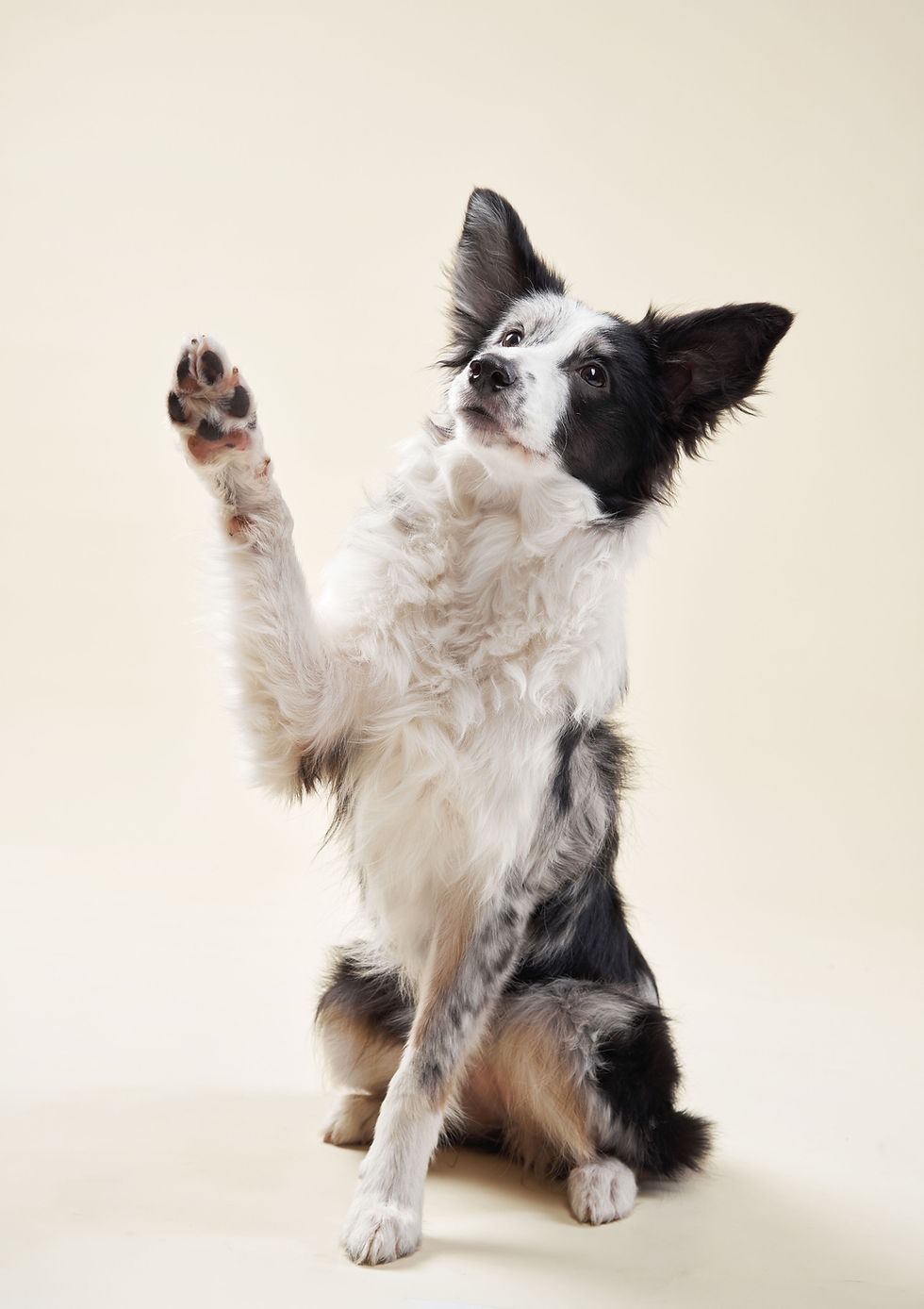Cleaning Skin Folds and Wrinkles
- Jessica

- Feb 27, 2024
- 3 min read
Updated: Feb 20
Skin Fold Care
If you aren’t already, we recommend implementing weekly once-overs of your pet to check for anything new or unusual. Looking at your pets skin, fur, ears, mouth, eyes, in between their toes and along their stomach, under the armpits, and under and around their tail is a great practice for early identification of anything abnormal that might be worth discussing with your veterinarian. If you have a wrinkly pet (bulldogs, sharpeis, sphynx cats, to name a few!), you will likely have to devote some time each week to keeping their folds clean and healthy.
Face and Neck Folds
Anytime folds of skin are present (most commonly found on wrinkly breeds with lots of rolls and crevices) there is a risk of infection. The combination of warmth, friction, and moisture creates the perfect environment for bacteria and yeast to thrive, which can cause an odor, irritation, redness, and excess moisture. It can be difficult to keep a pet’s skin folds free of moisture at times, especially for pets living in humid environments, pets that swim a lot or receive frequent baths, or even pets who are messy drinkers!
Thoroughly drying these areas with a towel, cotton gauze or swabs, or medicated wipe on a routine basis can help keep these areas dry and free of bacteria. This can be done as often as needed, but definitely at least once or twice a week as part of regular grooming maintenance. It’s important to take time to carefully wipe between all of the folds and spread them apart to evaluate the skin. If the skin appears red, moist, or has a foul odor, then more frequent grooming and medicated wipes may be warranted. In addition to maintenance grooming, it’s a good idea to wipe/clean your pet’s skin folds anytime they swim, go for a bath, or are outside when it’s raining. Additionally, special shampoos can be used during bath time to help promote healthier skin and discourage the growth of yeast and bacteria.
Recessed Vulva
While the folds around the face or neck are usually the most susceptible to irritation or infection, the vulva (in female pets) can also be a problem area for some pets. Every pet’s anatomy is somewhat unique, and a recessed vulva can create issues for young dogs. A recessed vulva refers to excess skin folds that can sometimes lead to urinary tract infections (UTIs) or vaginitis due to the body heat and moisture that is often present in this area. A recessed vulva can be identified by a veterinarian through a physical exam. While it is not breed- or age-specific, it tends to affect medium to large sized dogs, and heavier weight can definitely play a role.
For some pets, a recessed vulva may never cause any problems. It may improve as they age and grow, but for others, it can be a persistent source of irritation or infection. For recurring skin infections around this area, medicated shampoos or wipes may be beneficial. For pets not responding well to this treatment, or pets suffering from chronic urinary/bladder issues, surgical intervention may be beneficial. Veterinarians can perform a vulvoplasty, which refers to altering the skin around the vulva to resemble a more normal anatomy. The removal of this excess skin allows the area to dry better naturally. By preventing this area from being persistently moist, it makes it more difficult for bacteria to affect the skin and urinary systems.
All pets have folds
All pets have crevices that can be prone to inflammation or infection! Even if your pet doesn’t have wrinkles around their face or neck, crevices such as armpits or between the toes are common places for yeast and bacteria to grow. Keep an eye on these areas and monitor for any changes such as an odor coming from your pet, excessive licking or grooming of these areas, hair loss, or red, inflamed, or moist skin.
For additional questions about cleaning skin folds and wrinkles please contact us at 972-347-6100.





Comments